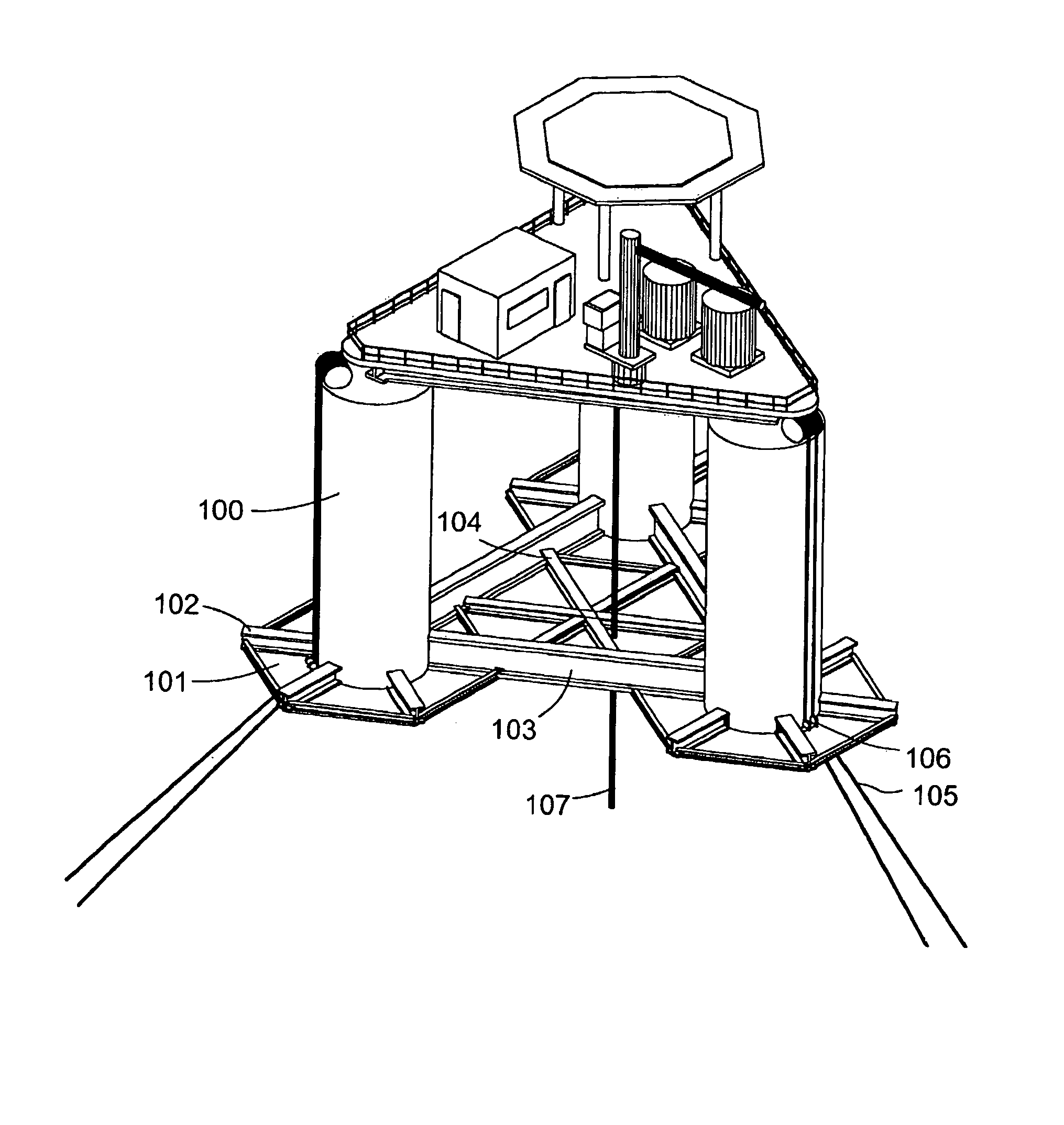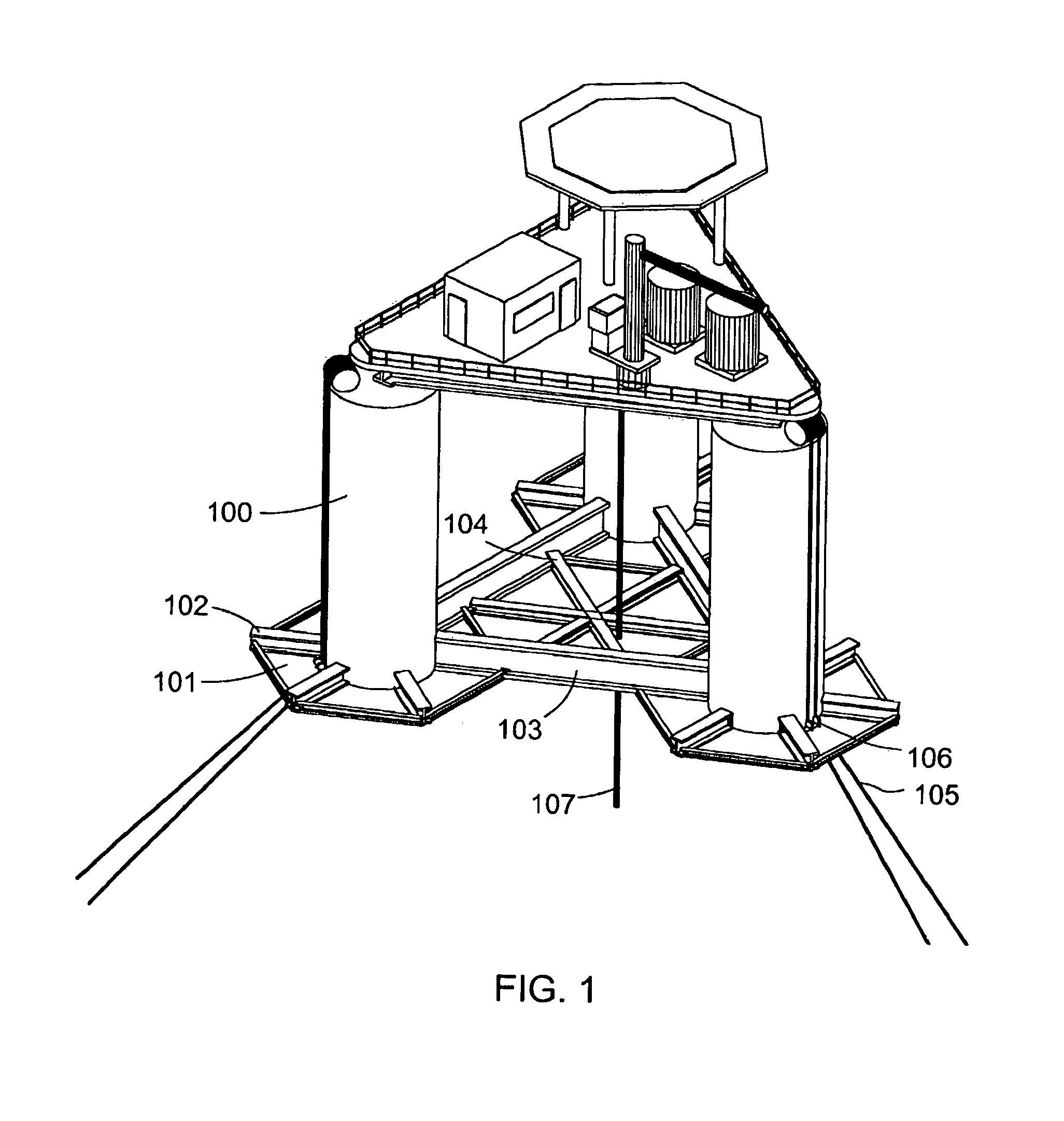Column-stabilized platform with water-entrapment plate
a technology of stabilized platform and water-entrapment plate, which is applied in the direction of foil-based vessel movement reduction, special-purpose vessels, vessel construction, etc., can solve the problems of line plugging, serious limitations, and many fields that do not contain enough oil or gas to justify, and achieves the effect of increasing the resistance to vertical acceleration
- Summary
- Abstract
- Description
- Claims
- Application Information
AI Technical Summary
Benefits of technology
Problems solved by technology
Method used
Image
Examples
Embodiment Construction
[0035]The platform is composed of a plurality of vertical stabilizing columns 100, from the base of which an horizontal water-entrapment plate 101 extends, supported by radial stiffeners 102. The water entrapment plate may be located at the base of the columns or somewhat higher to ease construction and operation of the apparatus. Large beams 103 are connected to the columns at both ends providing rigidity to the platform. Stiffeners or girders 104 provide additional support to the water-entrapment plate. The platform is anchored to the seabed with mooring lines 105. Fairleads are located at the base of the column 106 and allow passage of the mooring lines through openings in the water-entrapment plate. Risers or umbilicals 107 are supported by the platform to perform hydrocarbon production activities. The platform deck 300 is located a sufficient distance above the mean water line 301 to prevent contact of the wave crests onto the deck main structural supports during the most sever...
PUM
 Login to View More
Login to View More Abstract
Description
Claims
Application Information
 Login to View More
Login to View More - R&D
- Intellectual Property
- Life Sciences
- Materials
- Tech Scout
- Unparalleled Data Quality
- Higher Quality Content
- 60% Fewer Hallucinations
Browse by: Latest US Patents, China's latest patents, Technical Efficacy Thesaurus, Application Domain, Technology Topic, Popular Technical Reports.
© 2025 PatSnap. All rights reserved.Legal|Privacy policy|Modern Slavery Act Transparency Statement|Sitemap|About US| Contact US: help@patsnap.com



